Hat-Rack Horrors: Why Hat-Racking Is a Bad Pruning Practice
There is nothing more confounding for a horticulturist than to drive the suburban streets of South Florida and see the horrific tortures administered to the many trees that populate our landscape. Atrocious, awful, brutal, butchered and botched are some of the words that spring to mind when I see the pruning jobs that some homeowners allow their trees to receive. And that’s only the first two letters of the alphabet.
Trees are very special creatures and there is a golden rule to live by when thinking about pruning them—never remove more than a third of the canopy in one pruning session.
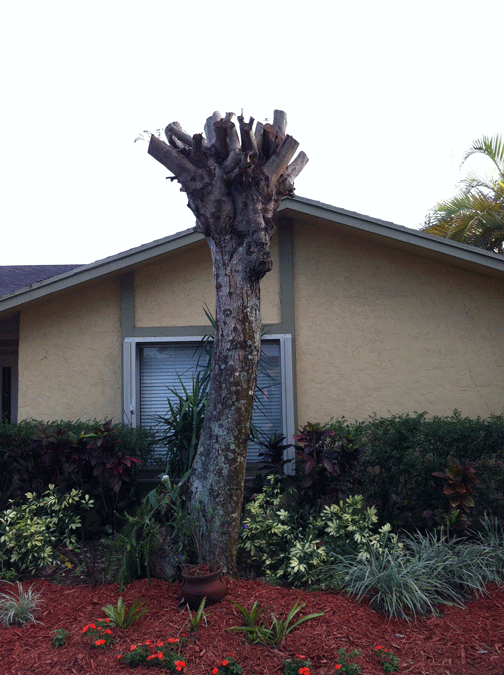
Hat-racking, a technique employed by some of South Florida’s tree trimmers, removes all limbs (100% of the canopy) above an arbitrarily drawn line. Hat-racking is a damaging and sometimes deadly pruning process. Removing the canopy of a healthy, vigorous tree has consequences far beyond the cosmetic damage.
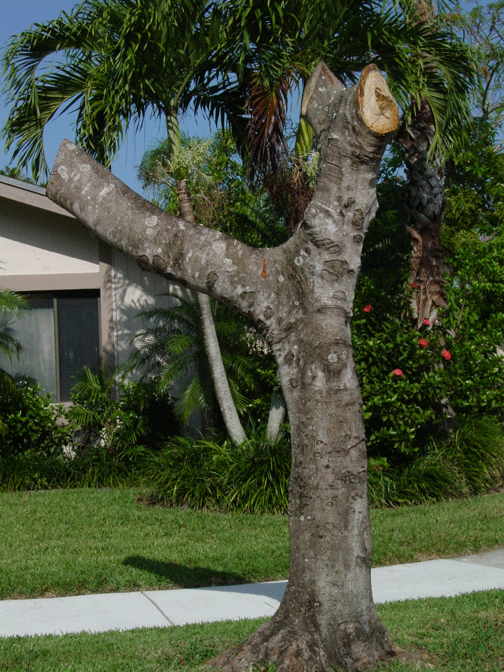
A hat-racked tree loses all its ability to make food, since its green, chlorophyll-containing food factories, the leaves, are removed. The tree is then forced to use all of its stored energy, found in the trunk and roots, to refoliate. Using up stored energy is never good. Sometimes the tree is so depleted that it can never fully recover and may often go into decline and die.
Sometimes a tree is able to restore its canopy, since hat-racked trees very often have huge bursts of regrowth to restore what was lost. Unfortunately, the regrowth is usually very weakly attached to the tree and will break easily in a storm. This is ironic because most tree trimmers that convince homeowners to let them hat-rack their trees do so under the guise that they are making the trees “hurricane-proof.” Hat-racked trees are actually much more likely to have their limbs broken in even a light windstorm than ones that have been pruned properly.
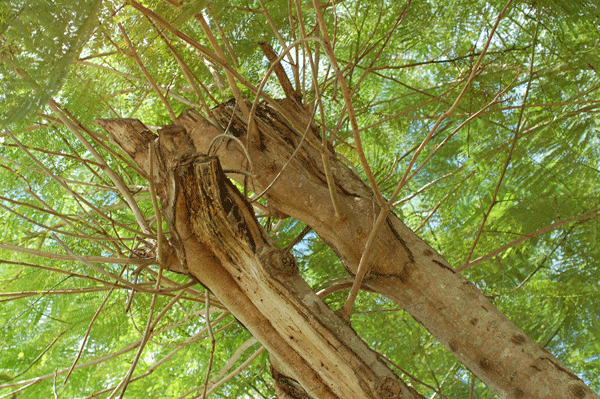
Huge amounts of regrowth are also bad because the tree simply ends up being the same size it was before you pruned it. Why prune it in the first place if the tree you end up with is a weaker twin of the tree you started with?

If you want to prepare your trees for the storm season, or improve their health, make sure they are properly pruned.
- Stick with thinning cuts. Thinning cuts are pruning cuts that remove branches all the way back to major limbs or the trunk. Thinning cuts are the opposite of the heading cuts that remove branches about halfway and are used in hat-racking. Thinning cuts let wind pass through trees and do not cause the tree to re-sprout.
- Remove the smaller of any two crossed branches. Crossed branches will eventually grow into each other and create a weak point.
- Avoid included bark. Included bark is the area where two branches or trunks that are growing from the same area of a tree are so close that they begin to grow into each other. It is a weak point on the tree. Remove the smaller of the two branches or trunks to avoid included bark.
- Start small. By pruning trees when they are younger, you can encourage the shape and size of the tree that you desire. Problems like crossing branches and included bark are better dealt with when a tree is very young than when it is large.
- Plant the right tree in the right place. Sometimes trees are over pruned because they are too big for the area where they are being asked to grow. Make sure when you plant a tree that you know its maximum size, and avoid planting a massive tree too close to a house or under a power line.
- Remove dead wood. Dead wood in trees can be an entry point for insects or pathogens and should be removed. Dead wood is also much more likely to fall from a tree and should be considered a hazard. When removing dead wood, don’t cut into live wood; cut back to the end of the dead wood as the tree has already sealed itself off from the dead wood and fresh wounds should be avoided.
- Hire an ISA-certified arborist. Arborists are professionally trained to prune trees in a healthy, safe way. They will cost more than the tree trimmers that leave flyers on your doorstep, but they are well worth it.
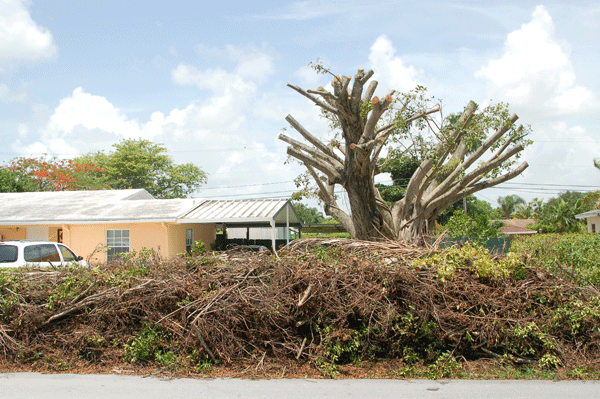
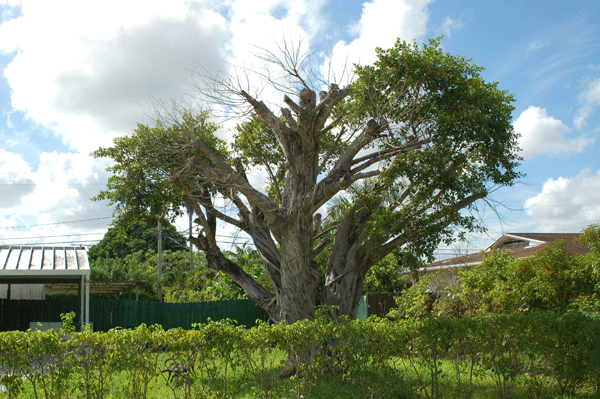
This article was originally published in the Miami Herald. Minor changes from the print version of this article were introduced to improve readability in a digital format.
